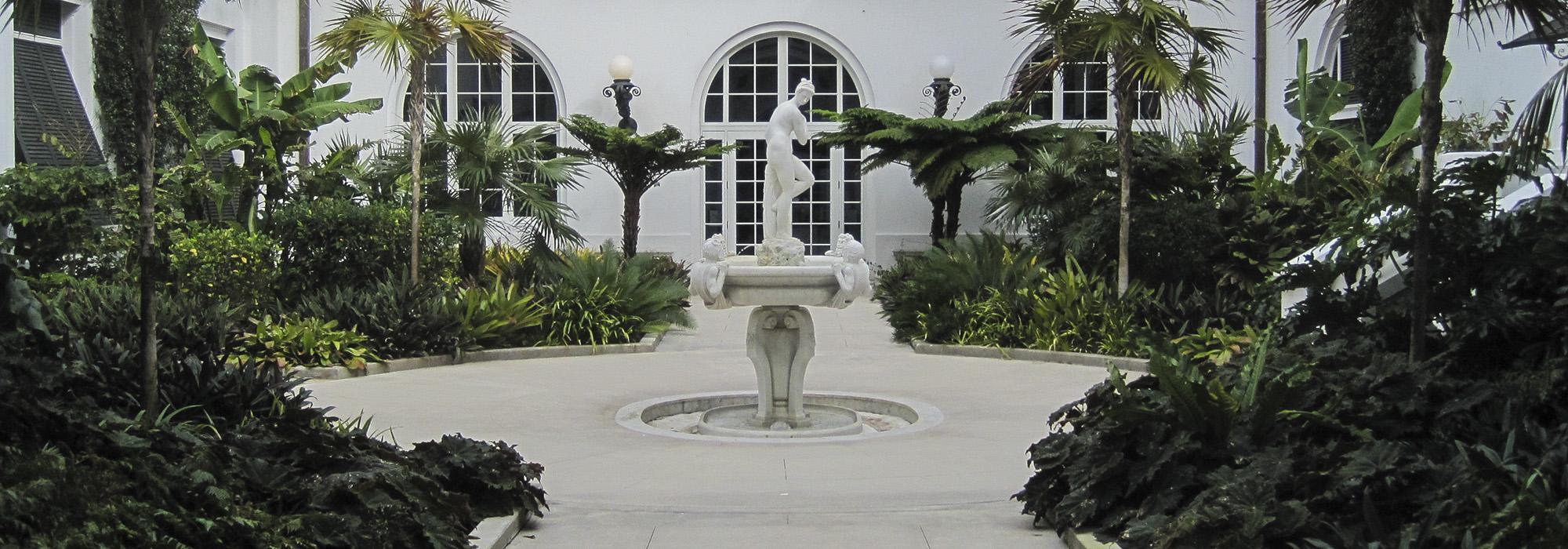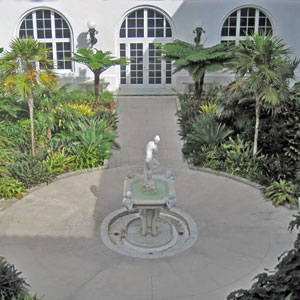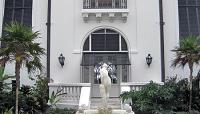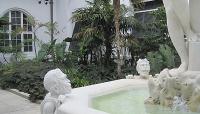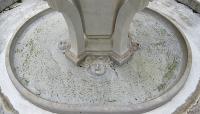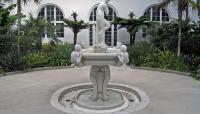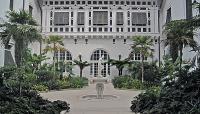Landscape Information
Henry Flagler built Whitehall as a wedding present for his wife, Mary Lily Kenan. Constructed between 1900 and 1901, the estate served as the Flagler’s winter residence. The three-story marble palace in the Neoclassical Revival style was designed by architects Carrère and Hastings.
A central feature in the palace’s design is a large, inner courtyard (90 feet by 50 feet) that provides light and cross-ventilation for the rooms and passages along its perimeter. The design is characteristic of Spanish and Mediterranean courtyards, adapted by the architects for a classical style building in a semi-tropical environment. The central feature of the courtyard is a white marble statuary fountain based on the 16th-century Grotticella Venus by Flemish sculptor Jean de Boulogne for the Boboli Gardens in Florence, Italy. The fountain sits on axis with the formal entrance and is framed by four planting beds at the center of the patio. The stairs to Marble Hall were added during the Whitehall Hotel period, replacing an earlier balcony from the Flagler period that had overlooked the courtyard.
In 1959, Whitehall was saved from demolition by Flagler's granddaughter, Jean Flagler Matthews. She established the Flagler Museum which purchased the building in 1959 and opened it in 1960. The hotel addition built in 1925 was demolished in 1963. The property was listed on the National Register in 1972 and was designated a National Historic Landmark in 2000.



